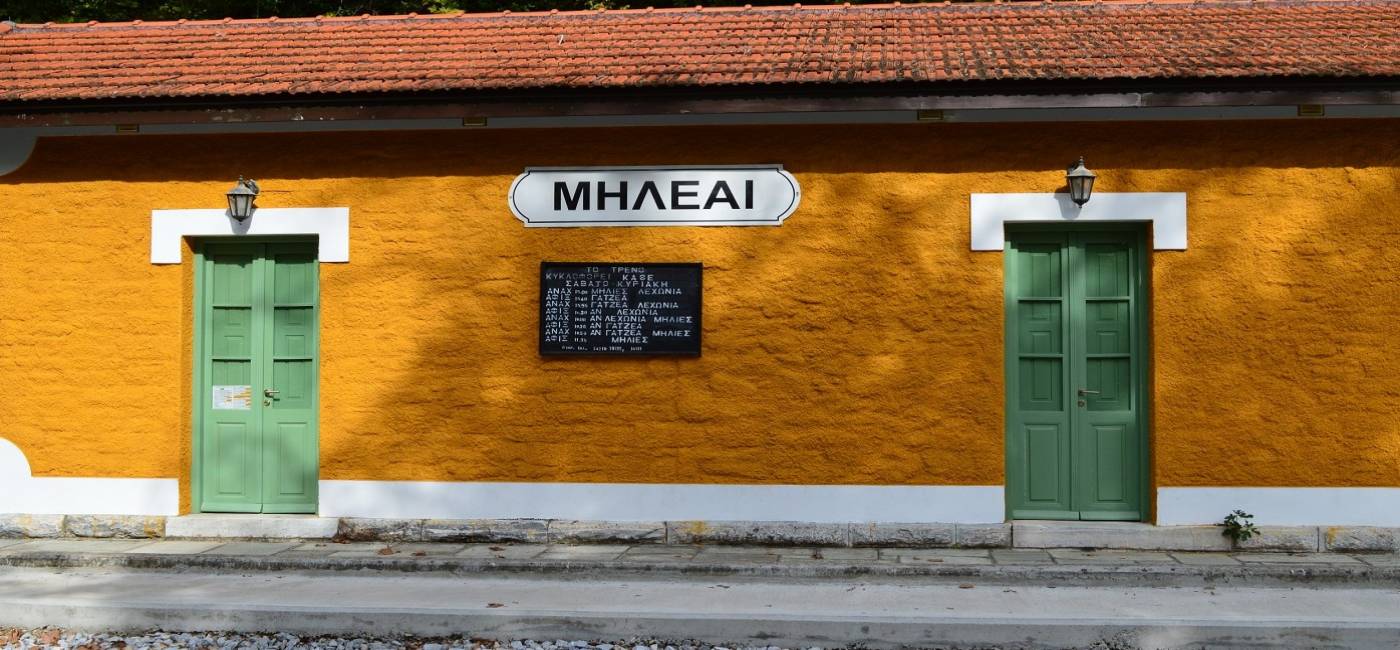Milies
A handful of restaurants, a few coffee-bars, and a couple of gift shops come alive on weekends and during holidays. That’s why we love Milies. Because despite the waves of tourists, Milies remains an introverted village. But again, that’s what Pelion really is. Small unpretentious villages that despite hundreds of daily visitors remain authentic and relatively unchanged. Apart from the Athenian license plates, nothing else in the village shouts “tourist destination.”
The history of the village is tumultuous. Legend has it that its founders came from Milies on Euboea sometime in the early Ottoman period (15th century) fleeing the devastating effects of the pirates and Ottomans. The inaccessible slopes of Mount Pelion became a safe refuge where they transferred their lives as well as the name of their village. In the 18th – early 19th century, Anthimos Gazis, Gregorios Konstantas, and Daniel Fillipidis, born and raised in Milies and influenced by the European Enlightenment movement, envisioned a liberated village and a country with well-educated people. With great effort and care, they founded a higher education institution at Milies under the name “Soul Therapy” («Ψυχής Άκος»). In 1821, Milies was the first Pelion village to join the Revolutionary War against the Ottomans. Yet, independence for Pelion would come much later (1881) and after many additional struggles. The Greek Revolutionary flag that Anthimos Gazis raised on May 7th 1821 in the Church of the Archangels is piously kept in the village library along with hundreds of other heirlooms of that time including rare books and manuscripts. Among them a photograph from 1903 with all the villagers (some 2,500 of them) standing in front of the school, all dressed up as they celebrate the arrival of the little train of Pelion and the inauguration of the railway line connecting Milies to Volos. These happy days were interrupted again with loss and sadness when in 1943 the German army burned the village down to the ground including the historic 19th century college. Only the church and a few other structures were saved.
Today, Milies is a hub for wealthy Athenians and celebrities seeking the quiet and slow pace of life in the countryside. The village has a lot to offer to both one-day visitors and long-term residents. Its location is excellent as everything is only a few kilometers away: the city of Volos, the spectacular beaches of Eastern Pelion, the picturesque seaside villages in the Pagasitikos Bay, the main mountain villages, several monasteries, and numerous trails.
Moutzouris, the little train of Pelion, ends its journey at the Milies station and the itinerary is honestly better than one can imagine. Quick landscape shifts, stone bridges, olive groves, peaceful beaches, lush gorges, farmers working in their fields, dark tunnels, huge retaining walls, caves, and old mansions. The train station itself is picture perfect as is the manually operated turn table. The Church of the Archangels of the mid-18th century is mesmerizing with its architectural secrets and the beauty of its wall paintings most of which revolve around one topic: the vanity of life. Horse-back riding on the cobble streets of the village, strolling along the rails, rappelling from the metal bridge of Evaristo De Chirico, and the constant search for the cave of the Centaur Chiron are only some of the daily activities of those who were lucky to have experienced Milies.



